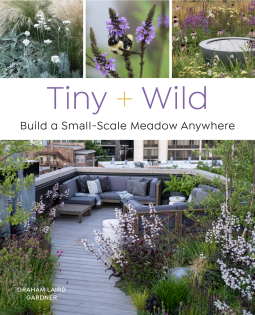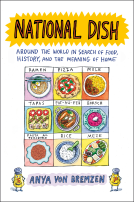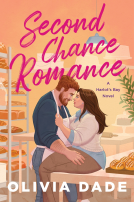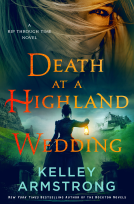
Tiny and Wild
Build a Small-Scale Meadow Anywhere
by Graham Laird Gardner
This title was previously available on NetGalley and is now archived.
Send NetGalley books directly to your Kindle or Kindle app
1
To read on a Kindle or Kindle app, please add kindle@netgalley.com as an approved email address to receive files in your Amazon account. Click here for step-by-step instructions.
2
Also find your Kindle email address within your Amazon account, and enter it here.
Pub Date Mar 07 2023 | Archive Date Jan 11 2024
Quarto Publishing Group – Cool Springs Press | Cool Springs Press
Talking about this book? Use #TinyandWild #NetGalley. More hashtag tips!
Description
*2024 American Horticultural Society Book Award Winner*
The word “meadow” might conjure an image of a broad, expansive prairie covering acres of land, but it doesn’t have to. Meadows don’t have to be big to make a difference in the health of the planet. If you choose the right plants, even a small corner of the yard will do. In Tiny & Wild, you’ll learn how to embrace your wild side and create a low-maintenance miniature wildflower meadow that’s teeming with life.
The perks of creating a wild planting, even on a small scale, are many. Tiny but mighty meadows help mitigate climate change, foster biodiversity, sequester carbon, and calm the senses. With as little as a few square feet of space, you can create a beautiful, naturalistic planting that supports a diversity of plants, pollinators, and a plethora of other living things, not to mention its visual appeal to human eyes. Author and landscape designer Graham Laird Gardner helps you find inspiration in natural spaces so you can successfully site, design, plant, and care for your own small-scale meadow.
Whether you live in the city or in suburbia, perfect places for a mini meadow are everywhere:
- A small corner of the yard
- The pocket-sized area between the house and driveway
- Along a property line
- Flanking the front walk
- Around your mailbox
- Tucked next to the front stoop
- At the center of the vegetable garden
- In a raised bed
- Containers, deck boxes, and patio pots
- In the sliver of land between the sidewalk and the street
The plant lists and charts in Tiny & Wild share the best plants to include in your micro prairie, and Graham offers plenty of practical advice on planting your meadow from seed, transplants, or mature plants, depending on your budget, the site, and your timeline. Plus, learn how to care for your wildflower planting, including tips for watering, plant care, and weed management.
Discover how small spaces can make a big difference in Tiny & Wild.
Available Editions
| EDITION | Other Format |
| ISBN | 9780760376232 |
| PRICE | $24.99 (USD) |
| PAGES | 176 |
Available on NetGalley
Featured Reviews
Tiny and Wild is very inspiring and I loved the pictures and well structured advice for adding the wild beauty of nature into landscape. I have struggled with a center flowerbed that simply refuses to be tamed sbd I have simply decided to embrace its inherent desire to be a wild thing. But I don’t have the mindset to create an aesthetically pleasing wild space. This book solves that stress and shows me wild can still be beautiful. The pictures designs and encouraging words have been perfect fir what I wish to achieve now I must begin planning. I highly suggest this one if the most helpful books I’ve seen. Honestly other books looked like abandoned lots expected to be pretend to be tended areas. Nit so with this book it mimics nature and still remains beautiful and calming. I can do this!
I'm currently planning the landscaping for both my front and back yards, and it is a bit overwhelming! The more I read about native plants and supporting the bees, birds, and butterflies, the more a meadow-type landscape appeals to me. I appreciated the foundation this book gave me and the things I learned that I need to consider. The author addresses the benefits of meadow-scaping, finding inspiration, and the planning, designing, preparing, planting, and maintaining of meadows small to large. The natural and native look is beautiful, and I enjoyed perusing the lists of suggested plants, divided by category: mid-height dry sun plants, tall dry sun plants, mesic to wet sun plants, grasses, annuals, edible plants, part-shade plants, groundcovers, bulbs and bulb-like plants. I'm more excited to get my soil prepared and design my yard after reading this book, and plan to refer back to it as a reference.
Disclosure statement: A complimentary copy of this book was provided from a tour group, publisher, publicist, or author, including NetGalley, OR was borrowed from the library, including OverDrive, OR borrowed from Kindle Unlimited, OR purchased. A review was not required and all views and opinions expressed are unbiased and my own.
 Reviewer 947611
Reviewer 947611
A fantastic new resource for gardeners interested in native planting, and featuring beautiful illustrations that provide inspiration and ideas for my own yard. There are a decent number of books available on gardening with prairie/native plants and focused on pollinators, birds, and other wildlife (I have more than a few on my shelf and have perused others from my library). But this book offers something new I haven't seen before. I really appreciate the focus here on being able to apply these ideas in small, even very urban, settings with a "mini meadow" garden. There's also excellent detail on how to design, plan, execute, and maintain a mini meadow. This is an area where I think a lot of gardening books fall short; they discuss conceptually what to do but the advice is often so vague as to be useless. This book really gets into the details, and not just on what do to in the dirt, but tools for planning on paper before you ever put a shovel in the ground. There's a lot to absorb in this book, I'm looking forward to getting it in hard copy! This would be a great addition to the library of any gardener interested in native plants, supporting wildlife, attracting birds and pollinators, and pursuing those goals even in tiny spaces.
Beautiful, beautiful, beautiful. Tiny and Wild by Graham Laird Gardner is an inspiration. He has written a comprehensive inspiring book on establishing what you can in the amount of space you can find and creating habitat no matter how tiny. He encourages and demonstrates how to accomplish this from concept to fruition. Planning, planting, and maintenance are covered with many beautiful photographs throughout and lists of plant choices. If you only have a little patch along a fence of a hellstrip this book will inspire you to know you can do it. He will show how you can design, prep the site, and plant while also talks about all planting conditions and takes that all into consideration. Also, the format is very user-friendly. :)
I would like to thank NetGalley and the publisher Quartro Publishing for another spectacular book on establishing habitat and for the opportunity to read and review this book.
 Media/Journalist 16509
Media/Journalist 16509
This is an exhaustive, excellent book for anyone interested in creating natural meadows on their property. It’s full of beautiful photos for inspiration and goes into much detail on every step. Plant lists are also provided for all kinds of needs and I loved that there was a list of edible plants too.
Meadows are beautiful, virtually self sustaining, and absolutely necessary for birds and other wildlife. And they are possible on rooftops, in hellstrips and in the smallest and oddest of landscapes. I’m glad to see so many books embracing them lately.
The one negative note I have is that these books always tend to be written by people who seem to have grown up wealthy and provide these services for wealthy people. The amount of money needed for sourcing plants and plugs of the scales shown from nurseries and mail order is just not in the reach of so many people. While he very briefly goes into seeds, there’s very little information on doing this from seed (Mini Meadows is good for doing it from seed IIRC) and no talk about how low income people can do this. The same can be said for disabled folks, who are generally low income as well and can’t just hire someone and spend thousands. We really must make sustainability accessible and that includes gardening, which helps the landowners and nature around them. These types of spaces are possible for low income folks too, though like everything else it requires some extra effort and creativity.
If you are looking to do this where you live, check into buy nothing groups, local gardening groups and friends and neighbors. Let people know that you are looking for native plants if locals have extra seeds or plants to share. Offer to divide overgrown plants in your neighborhood (elderly folks are often thrilled to have someone come thin their plants and take the extras). Do a little bit at a time if you are short on time or stamina. There are lots of other ways to build gardens without spending a fortune and investing thousands of hours of hard work or paying for someone else to do it.
That said, this doesn’t detract from what an excellent book this is. Highly recommended.
I read a temporary digital ARC of this book via NetGalley.
 Kirsty F, Reviewer
Kirsty F, Reviewer
This book is very useful for anyone wishing to create a meadow area or just any informal planting area. I particularly liked the photos that not only showed you the areas in bloom but also showed the same area in autumn/winter. I found the info on layering particularly useful, as this is where I struggle to see what the end result will look like.
The extensive lists of plants for all situations was very helpful and I have added some to my already lengthy list!
Thank you to NetGalley and the publisher for this ARC in return for an honest review.
Readers who liked this book also liked:
Kelley Armstrong
Historical Fiction, Mystery & Thrillers, Sci Fi & Fantasy


















